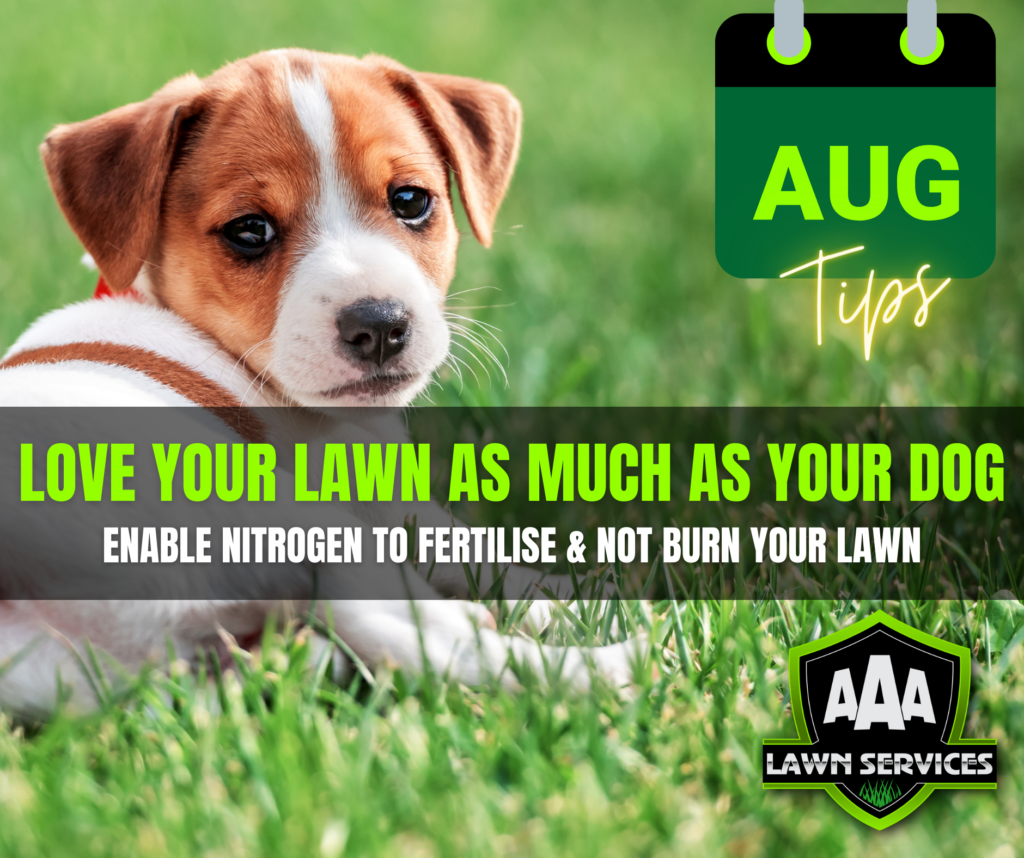
Nitrogen can Make or Break your Lawn
Early spring temperature fluctuations can cause sporadic turfgrass growth. Proper mowing is critical to the maintenance of a high quality lawn. If rapid turfgrass growth occurs, infrequent mowing will result in scalping of the turf. The frequency of mowing should be timed to remove no more than 1/3rd the leaf tissue. A week of 18o days and mild nights and the couch grass wakes up from winter dormancy.
Around 2 to 3 weeks after almond blossom appears is about the time that kikuyu emerges from dormancy. Assess the volume of clippings removed each cut. If it is significantly more than your previous cut then you should increase mowing frequency immediately.
Dog urine & faeces
Urine damage from dogs occurs occasionally in some home lawns. Often these spots are quite apparent in the spring. Homeowners often complain that the spots never recover and remain barren.
Dog urine and faeces can often be a frustrating problem related to lawn care. Small amounts may produce a green up or fertiliser effect while larger amounts often result in lawn burn or dead patches. While most burn spots will recover with time and regrowth, dead areas can be large enough in some cases to require reseeding or sodding. For homeowners who are also dog lovers, this can present a dilemma, particularly when one family member prefers the dog and another prefers a well-manicured lawn. An understanding of the interaction between dogs and the lawn can keep the yard (and family) at peace, not in pieces.
The fundamental problem with the presence of urine or faeces on the lawn is related to the nitrogen content and concentration of these waste products. Urine is a problem for lawns because it is applied all at once as a liquid fertiliser.
The primary concern in addressing urine damage to lawns is minimising the nitrogen concentration added to the lawn at any single time. The addition of any of dietary supplements has enough potential to cause harm, with limited to no known benefit for the lawn, and are not recommended. When owners have reported successes, as is sometimes the case on internet forums, liquids likely improved the situation because the urine concentration after treatment was diluted.
The most consistent solution to dog spots on lawns is to provide multiple fresh water drinking points around the garden to encourage the dog to drink more often. Watering the spot after urinations will accomplish the dilution with no ill affects on the dog. A fertiliser effect rather than burn was noted when the site was watered at any time up to 8 hours after urination. Routine watering of the grass in early mornings may not be sufficient to prevent all urine burns.
What fertiliser do we use?
Not all fertilisers are the same, and to steal a phrase from Castrol… Some fertilisers aren’t fertilisers. Ask us about it!
Pests and diseases
As the temperature rises above 16 degrees aphids become active, feeding on new plant growth. The most effective control is weed control – aphids breed on many species of thistle and other preferred weeds, then transfer to the young shoots of ornamentals. If spraying is considered necessary, a systemic insecticide that enters the plant sap stream is most suitable.




